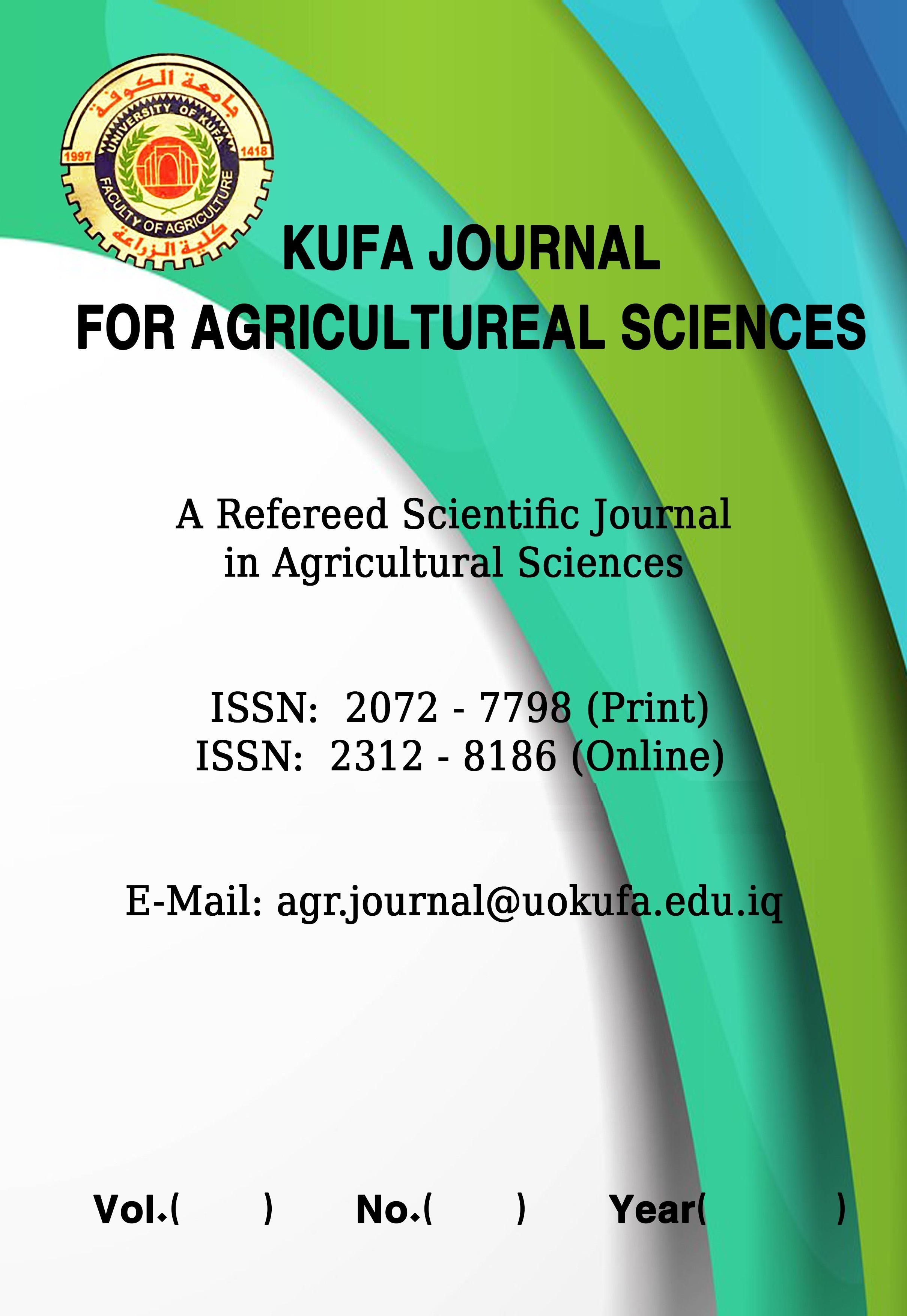Morphological and molecular identification of the root and stem base rot pathogen on broad bean crop and control it using some Trichoderma biological agents
DOI:
https://doi.org/10.36077/kjas/2023/v15i2.10323Abstract
This study looked at the effects of biological control strategies for root and stem rot disease caused by Rhizoctonia solani using soil organisms as biocontrol agents. The results of the field survey showed the spread of root and stem rot disease on broad bean plants in some areas of Najaf Governorate, where the infection rate ranged from 32- to 89.5%. The Isolation process showed that five fungal isolates of Rhizoctonia solani were associated with the disease, which differed in some phenotypic characteristics in terms of growth speed and color difference. The results of the molecular diagnosis using the ITS marker sequencing for the three most pathogenic isolates showed that they were belonging to Rhizoctonia solani, thus were named Ahmed 1, 3, 4 and registered in the GenBank under accession numbers; ON 394595.1, ON 394597.1, and ON 394599.1, respectively. In the pathogenicity test, R. solani isolates displayed a difference in their virulence on broad bean plants, where R. solani 1 (Al-Mashkhab isolate) was the most virulent among the isolates and was selected for subsequent studies. Isolate T. longibrachiatum (T3) showed high antagonistic efficiency against isolate of the pathogenic fungus R. solani on P.D.A culture media, gave the highest inhibitory percentage 75.06% compared to isolates T1 and T2 of Trichoderma harzianum, which led to inhibition of the pathogen to 68.71% and 68.94%, respectively. In the culture filtrate test of isolates of the living fungi, isolate T3 had the highest inhibition in the growth of pathogenic R. solani, which was 5.20 cm compared to the two live fungi T1 and T2, which led to 6.20 and 5.95 cm, respectively. As for the pots experiment, the results revealed that the isolate of T. longibrachiatum (T3) protected the broad beans plants from root and stem rot pathogen, where the disease was not seen compared to the treatment of the pathogenic fungus R. solani, only in which the infection severity was 80%.
Downloads
Downloads
Published
How to Cite
Issue
Section
License
Copyright (c) 2023 Ahmed Hayyawi Dakhil, Usamah A.Alkarim A.Almunam Alshimaysawe

This work is licensed under a Creative Commons Attribution 4.0 International License.
Kufa Journal for Agricultural Sciences is licensed under the Creative Commons Attribution 4.0 International License, which allows users to copy, to create extracts, abstracts and new works from the Article, to alter and revise the Article, and to make commercial use of the Article (including reuse and/or resale of the Article by commercial entities), provided the user gives appropriate credit (with a link to the formal publication through the relevant DOI), provides a link to the license, indicates if changes were made and the licensor is not represented as endorsing the use made of the work. The authors hold the copyright for their published work on KJAS website, while KJAS responsible for appreciate citation for their work, which is released under CC-BY-4.0 enabling the unrestricted use, distribution, and reproduction of an article in any medium, provided that the original work is properly cited.














